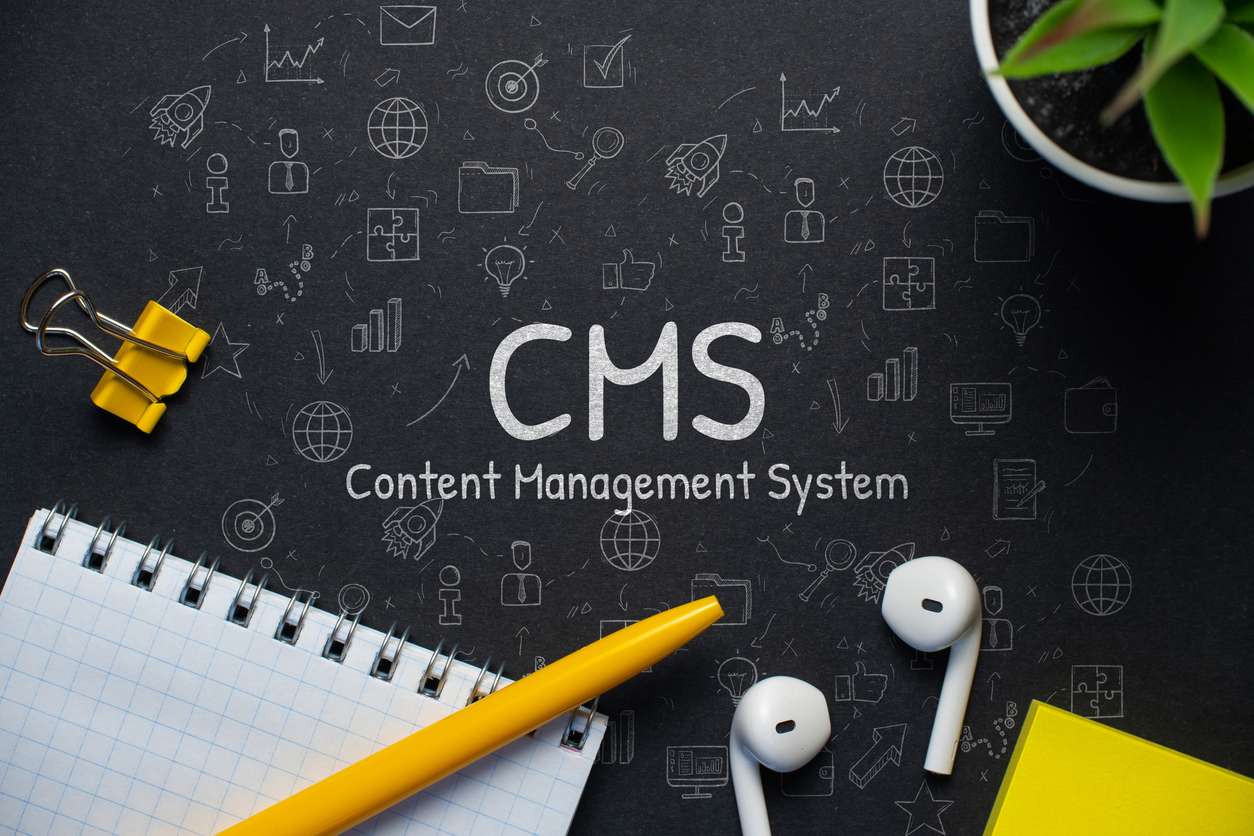Content Portability and Platform Independence: The Business Case for Headless CMS

With new technological trends and platforms rising seemingly every day in our ever-evolving digital landscape, businesses need to constantly overhaul their content strategies. Unfortunately, many more established companies have antiquated content management systems (CMS) with somewhat rigid legacy infrastructures that aren't company-wide integrations and fail to facilitate easy transfer from one platform to another. The answer is a headless CMS that alleviates these issues by providing content mobility and platform neutrality, allowing businesses to adjust easily to changes, change directions if necessary, and stay ahead of the competition. This article explores the business case for a headless CMS.
What is Content Portability?
Content portability refers to the capability of reusing and moving content across various delivery channels and platforms without needing major changes. A headless CMS inherently facilitates content portability due to its API-driven framework. Integrating a headless CMS into your digital content strategy allows businesses to easily disseminate and repurpose content across websites, mobile apps, IoT devices, and digital assistants, creating redundancies and operational efficiencies.
What is Platform Independence?
Platform independence allows businesses to select their optimal front-end solutions without being confined by front-end dependencies. With a headless CMS, businesses can easily integrate with various front-end frameworks, including React, Angular, and Vue or any other future technology. It avoids vendor lock-in and redundancy risks while ensuring businesses can easily invest in fast-evolving solutions; when businesses are not locked into a particular solution, it's easier to adjust when rapid advancements occur.
How Does Headless CMS Accelerate Digital Innovation?
Headless CMS technology increases digital innovation because it encourages businesses to test and prototype more quickly by enabling content creation decoupled from the delivery mechanism. When businesses can more easily experiment with CMS technology features without concern over the impact on the other end, it's easier to test new approaches. This creates faster time-to-market with new digital experiences because validating an experiment is easier and quicker, keeping businesses competitive.
Creating Consistent Customer Experiences
One of the ways that headless CMS contributes to better retention is via consistency. As brands grow, they generally need to reach their customers in more places and more digital channels. Whether it's a branded business application, online presence, or social media page, maintaining a consistently high level of quality ensures customers receive the same experience no matter where they access it. A headless CMS delivers content in the same format across devices and channels so that companies can focus on consistent, seamless experiences for their customers no matter how or where they choose to engage with them. Consistent messaging and brand awareness across all avenues of access builds customer trust, satisfaction, and loyalty all of which have a direct impact on improved retention statistics and long-term success.
Integrating With Technology
Another way that headless CMS increases retention is through integration with other technologies. The best headless CMS are API-driven, which allows them to integrate easily with existing business technology ecosystems. From analytics to CRM solutions to ecommerce and order entry systems, easy integration allows businesses to reduce friction of operational process flows and overwhelming technology complexities. The more businesses can rely on the technology they already have and simultaneously boost their enhanced success with a new solution, the more productive they'll be with staff able to leverage their technology investments.
Reducing Costs and Complexity of Operations
Another area where headless CMS solutions help is by reducing operational costs and complexities. Businesses no longer have to worry about over-customizing their solutions or needing specialized resources for continuous updates. Because many headless solutions are not platform dependent, businesses can have their teams manage and render content autonomously without any extensive front- or back-end work. This streamlines the development and rendering process while reducing technology overhead. When businesses save money, they can better reinvest in strategic activities that promote growth potential, innovation, and customer retention.
Future-Proofing Digital Content Strategies
Future-proofing digital content strategies means being able to pivot, adapt, and respond to technological developments. A headless CMS supports this by allowing businesses to easily integrate with new technologies, engage new channels, and adopt new content types and features as they come about without having to undergo a drastic change in the process. Such fluidity keeps companies competitive and relevant, always staying a step ahead of consumer wants and technological developments. This better positions these companies for the long haul.
Strong Scalability for Long-Term Viability
Where business demands are in a state of rapid growth, digital demand will shift overnight; sustaining business operation relies upon scalability. With a headless CMS, scalability is not an issue; it's a natural characteristic. The ability and capacity to accommodate extra demand from increased content creation to higher user demand, with no degradation in performance, speed, or engagement means that businesses can run their expanded digital ecosystems post-growth with confidence, knowing that it can handle the strain even when demand is at its peak.
Improved Security and Compliance of Content
Finally, organizations need to think about the security and compliance of digital content. Headless CMS technology allows for increased security of content as it separates management from frontend delivery; fewer vulnerabilities exist when sites can be hacked or breached quickly. Versioning for redundancy and detailed logging/auditing support compliance efforts, making it easier to avoid compliance errors, mishaps with sensitive information activity, and breaches before they happen across branding efforts.
Revolutionary Agile Content Personalization in Real-Time
Content personalization in real-time is a revolutionary approach to customer engagement, loyalty, and conversion. Therefore, content management systems that are headless integrate with analytics and personalization software seamlessly. This enables businesses to change content in real-time based on interactions and interests. Because it's possible to continuously evolve adjustments, businesses can more effectively tailor messaging and delivery to meet customer needs through pinpointed content across digital channels.
Global Growth with Buzzworthy Facilitation
Globalization may be the wave of the future, but it can present challenges; however, headless content management systems relieve the headaches when it comes to managing an international content strategy. Businesses can access one hub to change multilingual and geo-specific content so that brands can enter new markets, easily adjust and deploy culturally relevant content, and scale quickly across the globe. With facilitation and localization made easy, extended reach and global brand perception and consistency are more easily managed for better differentiation, growth opportunities, and positioning.
Collaboration for Competitive Advantage Almost Overnight
Teams rely on collaboration for content creation, and clear guidance is needed for channeling to ensure agile content deployment. Headless Content Management Systems make collaboration among content creators, marketers, and developers easier with guided responsibility and workflow. When teams can collaborate in real-time, approve and give feedback, and deploy content without miscommunication, the productivity levels rise with quicker turnaround times and heightened agility that contributes massively to competitive advantage.
More Efficient Updating Across Channels
Maintaining the relevance and consistency of content across multiple channels can be a challenge and time-consuming. A headless CMS gives companies the advantage of managing all content in one central location, meaning businesses can push out updates across omni-channels from a singular software space. There's no more worry about one platform lagging behind another; this agility enables companies to take advantage of marketplace opportunities to promote faster than ever without worry about inconsistent messaging across simultaneous channels.
Faster Implementation of New Technologies
The digital world moves too quickly for companies to fall behind. A platform-agnostic headless CMS enables organizations to implement new technologies AI, voice search, VR seamlessly for optimal performance. Content strategies can leverage new integration without an adverse impact on current or holistic infrastructure. This simplicity gives organizations a leg up on the competition and the added benefit of proactive enhancement for consumer needs.
Greater Resilience by Avoiding Vendor Lock-In
Flexibility can be compromised with vendor lock-in as time progresses. A headless solution allows organizations to distance themselves from technology providers, enhancing risk mitigation and resiliency. Companies can use whatever software works best at the moment for frontends or digital engagement. This separation sustains agility, cost savings, and strategic versatility in an unpredictable digital marketplace.
Conclusion
Content portability and platform independence provide a compelling business case for switching to a headless CMS in an increasingly technological world with evolving consumer needs and expectations. While traditional CMS options provide integration-specific, all-in-one architectures, headless CMS solutions use a decoupled, flexible, API-first architecture that separates content management and content delivery; this is a much more feasible and effective approach to managing and rendering content across digital channels. The separation of architecture significantly improves content portability and allows organizations to daisy chain, reuse, and re-publish the same content much easier across channels from websites to mobile apps, from voice-enabled applications to kiosks and every other channel that exists and the ones yet to be created.
Furthermore, this level of platform independence allows enterprises to have the business flexibility they need to choose and integrate the best frontend solutions without being chained to a backend due to the restrictions of traditional CMSs. Organizations can select a frontend or change frontends as often as they choose today it's React, tomorrow it's Angular, next week it's a homegrown solution, or one by a vendor not yet discovered and feel relatively comfortable their brand won't suffer from customer loyalty lock-in because of traditional integrations that will take too long, be too prohibitive, or too constraining to change down the road. Such fluidity allows businesses to assess quickly, explore UX, generate prototypes on the fly, and add new features without operational constraints or cumbersome systems and expensive rollouts.
This is vital for operational effectiveness, as adopting headless CMS technologies reduces operational challenges through the centralization of content creation across digital elements and easy integrations with other necessary business systems including analytic systems, CRM systems, e-commerce systems, content marketing systems, etc. A simpler operating system equates to quicker implementation for content deployment, easier content workflows, and better employee allocation that cut operational costs and frees up personnel for better avenues for business.
There's a baseline scalability with headless CMS applications that support operations that guarantee an organization can handle increased content volumes and customer traffic without performance dips and stability challenges integral for growth sustainability and consistent customer experience despite expanding digital channels.
Finally, security is another motivator for relying on a headless CMS architecture; with the physical and theoretical separation of back and front end, the headless option reduces vulnerabilities to attacks while avoiding exposure to sensitive consumer data. Layered security via analytics platform integration offers clearer logging with audit trails that simplify compliance while refocusing the brand on governance protections instead.
A brand that can easily address these attributes is automatically ahead of the competition, relying on these strategic advantages to easily adapt to new digital channels, new technological needs, and changing consumer wants and needs. Therefore, by adopting the components of content portability and platform independence that enable such attributes with headless capabilities, brands place themselves in a better position for sustainable competitive advantage; their operations will be future-proofed with fast innovation opportunities that allow resource pivots to more complex, ever-changing environments.




